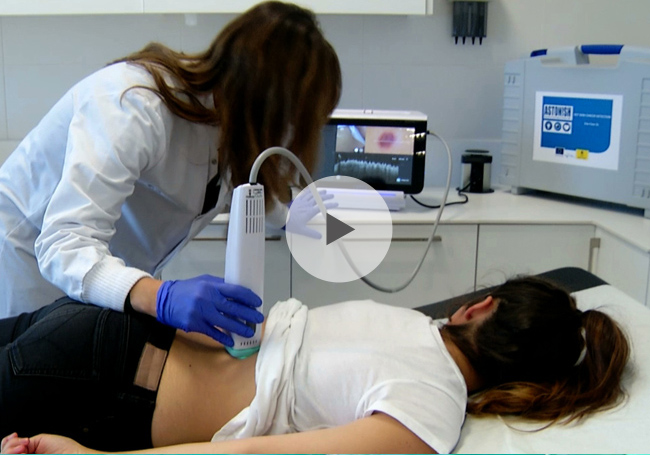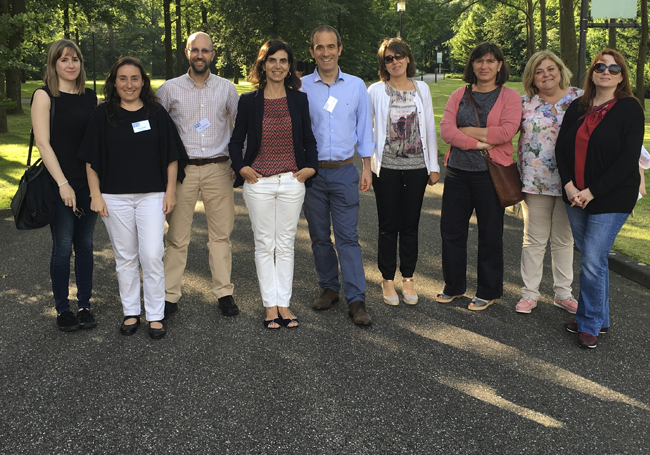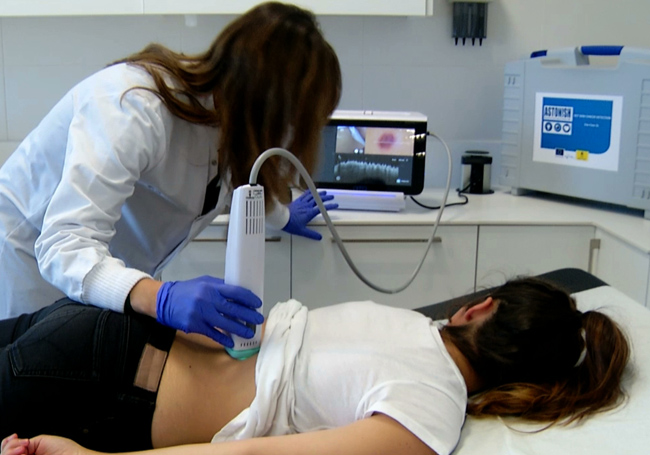The incidence of melanoma in Spain increases 10% every year. In the Basque Autonomous Community it has almost doubled over the last ten years. Right now analysing a suspect cutaneous lesion is done by means of a biopsy, a process that can take up to several weeks, entails high personal cost owing to the uncertainty and the tension of the wait, and involves an economic burden resulting from the cost of the procedure itself and the succession of appointments. This reality is compounded by the fact that the incidence of melanoma in the Basque Autonomous Community has almost doubled over the last 10 years. World Melanoma Day is being observed on Wednesday, 23 May.
-

Ferreirak eta Bengoetxeak beren programak aurkeztu dituzte UPV/EHUko Klaustroan
-

UPV/EHUko 19 diziplina, munduko 500 onenen artean, Shanghaiko rankingaren arabera
-

Zientzia, Ingeniaritza eta Arkitekturako monografiarik onena
-

Medikuntza birsortzailearen etorkizunari buruzko gakoak
-

Beste pertsona bat al gara beste hizkuntza bat hitz egitean?
23 May, World Melanoma Day
A Basque consortium develops a methodology that uses imaging for the early diagnosis of skin cancer
The UPV/EHU-University of the Basque Country, TECNALIA, Ibermática, and NorayBio are working on an optical biopsy, a non-invasive technique that will shorten patient waiting times
- Research
First publication date: 22/05/2018
(Opens New Window)
This is the background against which the University of the Basque Country (UPV/EHU), the TECNALIA research centre and the companies Ibermática and NorayBio are developing a tool to facilitate the early diagnosis of cutaneous melanoma and basal cell carcinoma through imaging and clinical data. Molecular data relating to the prognosis, which could help to specify more personalised treatments, are also being studied.
This tool is based on the application of OCT (Optical Coherence Tomography) to diagnose skin cancer; in clinical practice these are images taken in a way similar to that of an ultrasound scan but with microscopic resolution. The consortium is also providing its expertise in Artificial Intelligence techniques, in this case geared towards the processing of the images, to analyse the photos of the evolution of the spots and automatically compare them with an image bank comprising actual cases that have been collated previously.
By means of optical biopsy this new technology will improve the in-situ diagnosis of suspect lesions in a fast, non-invasive way for the patient. It will help to identify the tumour during the early phases of its development while contributing to reducing false positive cases and false negative ones. At the end of the day, this new means of analysis will cut diagnosis times significantly, minimise patient trauma, and lead to savings in procedure costs.
The development of this diagnostic tool is the final aim of ASTONISH -Advancing Smart Optical Imaging and Sensing for Health-, a 3-year European project due to be completed next year. Another 20 European companies are participating alongside the consortium of Basque companies. This project has received funding from the Electronic Component Systems for European Leadership Joint Undertaking under grant agreement Nº 692470. This Joint Undertaking receives support from the European Union’s Horizon 2020 research and innovation programme and Netherlands, Italy, Finland, Czech Republic, Belgium, Spain.
Melanoma
Over 5,000 people were diagnosed with melanoma in 2017, and the number of cases is increasing 10% every year, according to data from the SEOM (Spanish Society of Medical Oncology). The estimated incidence of melanoma in Spain in 2017 was 5,186 cases (for both sexes). This type of skin cancer is in ninth position among the cancers diagnosed among women in Spain (2,810 cases in Spain in 2017, accounting for 3.09% of cancers) and thirteenth among men (2,376 cases in 2017, accounting for 1.7%).
In Europe over 100,000 melanomas were diagnosed, putting it among the 10 most common types of cancer. For Europeans the lifelong risk of developing melanoma is approximately 1 in 100.
Image gallery
-

Cristina López Sarachaga (Tecnalia), Eva González (Noraybio), David Fernández (Noraybio), Itziar Cuenca (Ibermática), Pedro Mª de la Peña (Ibermatica), Aintzane Asumendi (UPV/EHU), Astrid Beascoa (UPV/EHU), Lola Boyano (UPV/EHU) and Estíbaliz Garrote (Tecnalia). -

Working on an optical biopsy. (Laura López. UPV/EHU)



